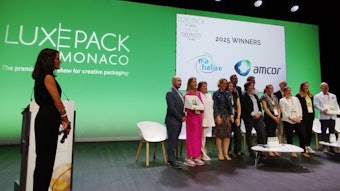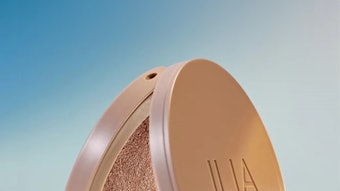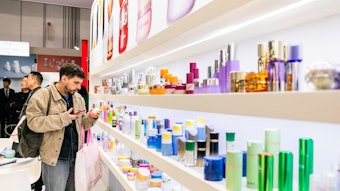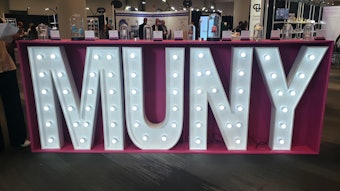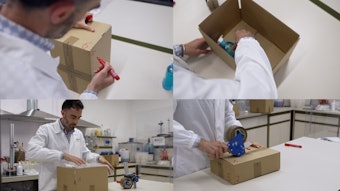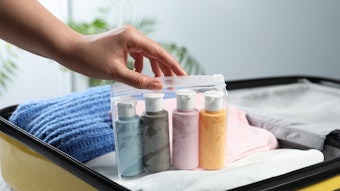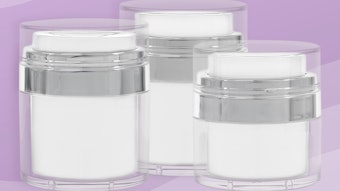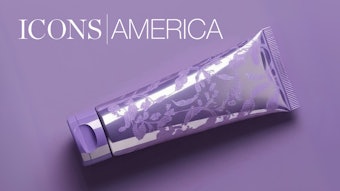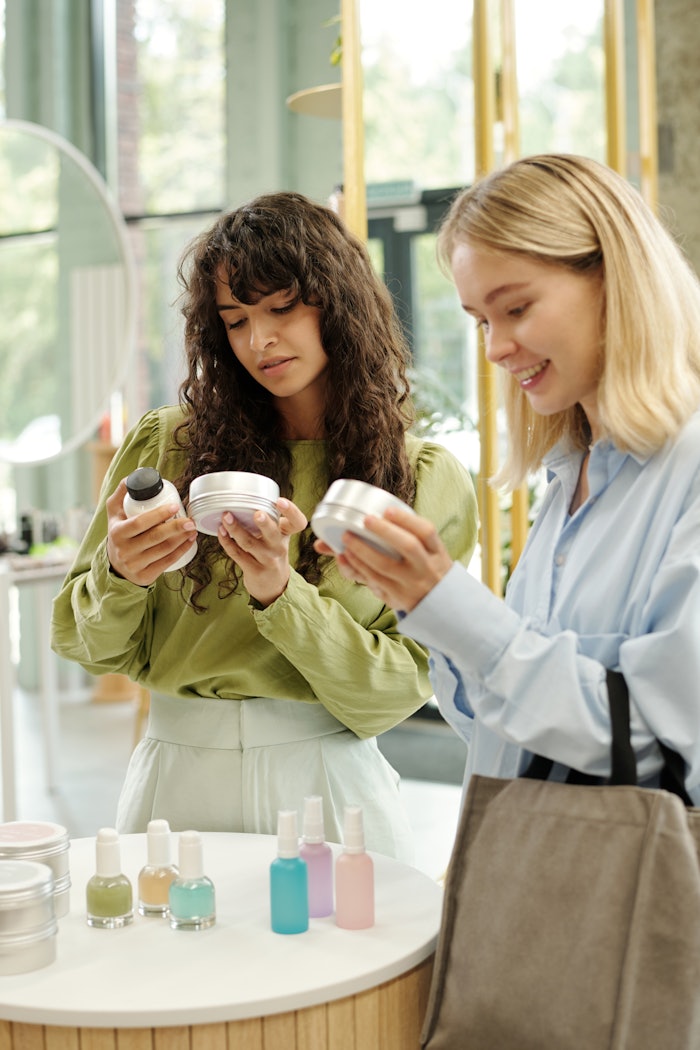
Up until a few decades ago, most cosmetics were sold in reusable glass containers. That practice has changed dramatically, with plastic-based packaging becoming the norm. As consumers have grown more aware of plastic waste, however, another shift has occurred in the cosmetics industry. Today, beauty brands are exploring options to reduce waste, including light-weighted formats, use of post-consumer materials, refillable concepts, upcycling and reusable concepts. Here’s how reused packaging could reshape the beauty industry.
Understanding Cosmetic Packaging Reuse
Refillable cosmetic packaging was the norm until roughly 75 years ago. That’s when American cosmetic chemist Jules Montenier, Ph.D., packaged the first cosmetic product into a squeeze bottle composed of polyethylene. Before long, users not only celebrated the material’s durability—and its disposability. Today, the cosmetics sector produces 120 billion units of packaging globally every year. Many are still made from forms of squeezable plastic. These forms of packaging have created a global market for cosmetics packaging that is about to breach the $30 billion mark.
Because it can be challenging to source returnable or refillable containers for beauty products, reuse is becoming a viable option to prevent packaging from going straight to landfill. In short, reuse gives cosmetics packaging a second lease on life.
How Reused Packaging Helps Reduce Waste in the Beauty Industry
Refilling and reusing containers seem to be natural sustainability choices as consumers attempt to move toward a zero-waste lifestyle. So, why are there comparatively few brands offering this option? Brands like The Body Shop have been offering refillable options for some time but saw little consumer demand. Today, the brand is finally experiencing an uptick in requests from consumers, as well as requests from its own in-store teams— in addition to wider society’s demands.
Other brands are building alternative business models by offering circular options that allow consumers to return empty cosmetics packaging and/or refill it. Izzy Beauty’s products, for instance, use mostly stainless-steel packaging with recyclable applicators and are available by subscription. When customers receive their next delivery, they mail back any used-up products.
Examples of repurposed cosmetics containers include using compact packaging as storage containers for jewelry. Empty lipstick tubes make perfect containers for Kirby hair grips, for example, and used scented candle glasses are perfect to keep makeup brushes organized. While brands can encourage consumers not to throw away cosmetics packaging, this type of reuse relies heavily on consumer creativity .
Steps to Implement Cosmetic Packaging Reuse in Your Business
Because consumers are starting to look for alternatives to plastic packaging, brands have a unique opportunity. First, cosmetics brands need to choose which method of reusing or recycling works best for their products. Recycling only works for containers that keep their shape. Soft plastics are not yet readily recyclable. On the other hand, newer, sustainable materials like bamboo or ceramics are almost infinitely reusable in refill schemes. Packaging made from stainless steel or aluminum also retains its shape for a long time.
If your brand is considering a refill model, you need to be sure that your business has the facilities to manage the logistics involved. Products that are left on the skin need to be packaged airtight to retain their integrity and avoid contamination, for example. Products that are rinsed off the skin are therefore generally easier to manage in a refill model.
Most containers inevitably reach the end of their life, and managing that time has traditionally been difficult. The size of the containers and the fact that many are made of multiple materials has traditionally prevented effective recycling. Now, leading brands like Garnier and L’Occitane have turned to specialist recycling companies to develop solutions.
Benefits of Reused Cosmetic Packaging for the Environment
The benefits of recycling and reusing cosmetics packaging are obvious—any cosmetics container that is being reused or repurposed does not end up in a landfill.
According to research quoted in Elle Magazine, humans will have deposited roughly 12,000 metric tons of plastic trash in nature or landfills. As consumer awareness of these issues has grown, consumer perception of what constitutes zero-waste brands has also shifted. Previously, consumers were focused on formulas and ingredient lists. Today, packaging is growing in importance.
Using recycled packaging or offering reuse options allows brands to reduce the amount of waste they are sending to landfill. Cosmetics company Avon is one example of a brand that is nearing a goal of sending no waste at all to landfills. Brands like Lush have been packaging-free pioneers for decades. The brand has now taken its commitment one step further by opening three stores across Europe and the United Kingdom that sell products entirely without packaging.
These brands have one thing in common: they are putting themselves in a position that will clearly set them apart from the competition. This is one way of ensuring their businesses will not only survive but thrive.
Challenges and Limitations of Reuse in Cosmetic Packaging
Moving toward reuse and recycling in cosmetics packaging is not a simple step . For most brands, this change will require a review of their business model and serious strategic consideration of which path to choose toward greater sustainability. Reducing excessive packaging is one way of starting to move toward a greener future. This change can be the first step in a series of moves toward becoming a zero-waste brand.
Above all else, cosmetics brands need to be transparent with their target audiences. Allowing audiences to understand how ingredients are sourced and where and how products are manufactured is only the beginning. Designing sustainable packaging options or developing zero-waste business models is the logical next step. For many companies, there will need to be a period of transition, during which manufacturers admit to the fact that they may not yet have a perfect solution but are making continuous efforts to develop one. These cosmetics brands will be the market leaders of the future.
Nicolle Portilla is the marketing manager for RTS and Zero Waste She is responsible for content creation on all platforms, including the RTS blog and internal and external newsletters. Prior to her time at RTS, Portilla worked with the Clean Water Action, where she promoted clean water initiatives. She graduated from Stony Brook University in 2018 with a B.A. in Sustainability.



